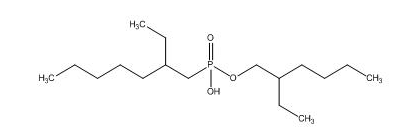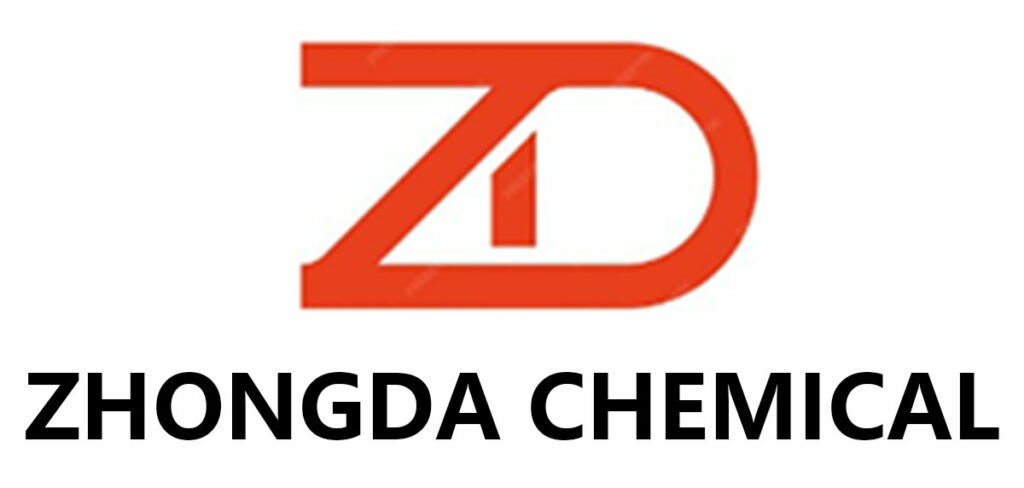Structure: 
| Appearance | slightly light yellow liquid |
| Formula | C16H35O3P |
| CAS No. | 14802-03-0 |
| EC No. | 238-865-3 |
| UN NO. | 3265 |
| HS CODE | 2919900090 |
| Content (%) | ≥95 |
| Diacid % | ≤2.0 |
| Viscosity (25℃)mm2/S: | 36±3 |
| Phase separation speed(S) | ≤150 |
| Density(20℃)g/ml | 0.930—0.960 |
| Flash Point℃: | ≥170 |
| Refractive index: | 1.447—1.453 |
| Synonyms | PC-88A |
P507 extractant is typically a clear liquid at room temperature. It is often used in its pure form or
dissolved in an organic solvent, such as kerosene or other aliphatic diluents, for extraction purposes.
P507 extractant is sparingly soluble in water but highly soluble in most organic solvents. This
property allows it to form a separate organic phase when mixed with aqueous solutions, facilitating the
extraction process.
The efficiency and selectivity of metal extraction using P507 extractant can be influenced by the
pH of the aqueous phase. The optimal pH range for extraction varies depending on the specific metal
ions and the desired separation conditions.
P507 extractant is generally stable under typical operating conditions. It can withstand moderate
variations in temperature and pH without significant decomposition or loss of extraction performance.
However, extreme conditions or prolonged exposure to high temperatures and strong acids or bases
may degrade its effectiveness.
P507 extractant exhibits good selectivity for certain metal ions, especially rare earth elements (REEs).
It can preferentially extract specific metal ions from a mixture of different metals, allowing for their
separation and purification.
P507 extractant can be regenerated and reused in extraction processes. This is typically achieved by
stripping the extracted metal ions from the organic phase using an appropriate stripping agent or
adjusting the pH to release the metal complexes. The recovered P507 extractant can then be recycled
for further extraction cycles.
P507 is widely used for the extraction and separation of rare earth elements. It offers excellent
selectivity for REEs, enabling their efficient extraction from aqueous solutions containing a mixture
of metals. The extracted REEs can be further processed and purified for various industrial applications.
P507 extractant has been employed in the extraction of uranium from ores and solutions. It
demonstrates good affinity for uranium ions, allowing for their selective extraction and separation
from other metalions present in the system. This is particularly relevant in the nuclear fuel cycle
and uranium mining industry.
P507 extractant can also be used for the extraction of transition metals, such as nickel, cobalt, and
copper, from aqueous solutions. Its selectivity and efficiency in extracting these metals make it
valuable in various extraction and refining processes.
P507 extractant has been employed in the recovery and recycling of metals from industrial waste streams,
such as spent catalysts, electronic waste, and metal plating solutions. It enables the selective extraction
of valuable metals, allowing for their recovery and subsequent reuse.
P507 extractant is often utilized in the optimization and development of hydrometallurgical processes.
Its performance, selectivity, and efficiency are evaluated in laboratory and pilot-scale studies to determine
the optimal conditions for metal extraction and separation.
The raw materials required for the synthesis of P507 extractant include 2,4,4-trimethylpentyl alcohol and
phosphorus trichloride (PCl3). These materials are obtained and prepared according to the required
specifications and purity.
The synthesis of P507 extractant involves the esterification of 2,4,4-trimethylpentyl alcohol with phosphorus
trichloride. In this step, the two reactants are combined in appropriate stoichiometric ratios and heated
under controlled conditions, typically using a reflux setup. The reaction is carried out in the presence of a
suitable acid acceptor, such as triethylamine or pyridine, to facilitate the formation of the desired ester
product.
After the esterification reaction is complete, the reaction mixture is carefully acidified to hydrolyze the
ester and convert it into the corresponding phosphinic acid. This step involves the addition of a strong
acid, such as hydrochloric acid or sulfuric acid, to the reaction mixture while maintaining suitable
temperature and stirring conditions.
Once the acidification is complete, the crude P507 extractant is subjected to purification steps to
remove impurities and by-products. Purification methods may include techniques such as solvent
extraction, distillation, recrystallization, or chromatography. These steps help to isolate and obtain
the desired pure P507 extractant.
The purified P507 extractant is typically dried to remove any residual moisture. Then, it is
packaged in suitable containers, such as bottles or drums, ensuring proper sealing to maintain its
quality and prevent contamination. The extractant is often stored and transported in a dry and
cool environment to maintain its stability.
1. Incoming inspection: The main raw materials,are inspected for their content, appearance
and other main properties.
2. Feeding inspection: the principle of raw material feeding is first-in-first-out, and the appearance
of the main raw materials is randomly inspected according to whether there is a big change in the
storage conditions before feeding.
3. Batch sampling in the production process: During the production process, the main indexes of
each batch of products: content and acid value will be examined three times in different time periods.
4. Storage Inspection: Each batch (4tons) is inspected before storage.
5. Outbound inspection: According to the quantity demanded by customers, the products will be
sampled and inspected.
6. Pre-shipment inspection: according to customer’s requirement, third party inspection can be carried
out on the products before shipment.
Physical Appearance: Visual inspection
Purity Analysis:Gas chromatography (GC)
Acid Value:Potentiometric titration
Water Content:Moisture analyzers
Refractive Index:Refractometer
Density:Density meter
Each batch of products should be accompanied by a certificate of conformity, including: the name of the
manufacturer, the name of the product, the production batch number, the net weight per barrel, the quality
level and the implementation of the standard number.weight, quality grade and implementation standard
number.
Packed in clean and dry plastic drums, net weight 200±0.3kg per drum or 1000±0.5kg, compressed and
sealed after each batch.
This product is packed in plastic drums, during transportation and loading/unloading, it should be carefully
and gently put down, and prevent from impact.
The storage place should be cool, dry and ventilated. Do fireproof and rainproof.

The company pursues the concept of “continuous innovation, the pursuit of first-class”, and is willing to provide domestic and foreign customers with high-quality products and satisfactory service.